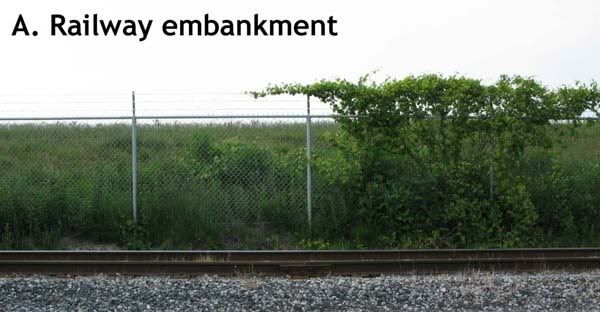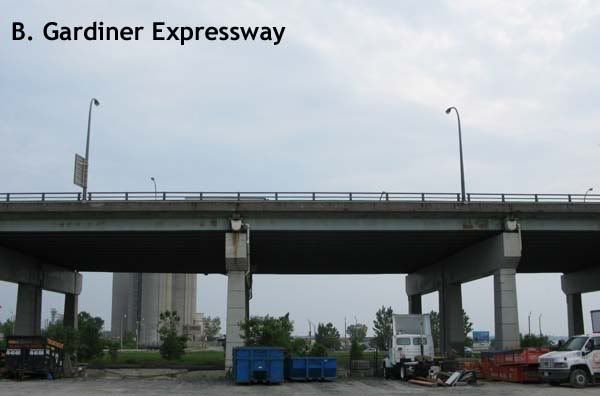nfitz
Superstar
????? TTC has voted many times to approve it, and are managing the extension. City of Toronto has a lot to do with the extension.nfitz, the extensions into York Region have nothing to do with the City of Toronto.
????? TTC has voted many times to approve it, and are managing the extension. City of Toronto has a lot to do with the extension.nfitz, the extensions into York Region have nothing to do with the City of Toronto.
I have a BIG problem with you suggesting we wait for the EA. The TTC, for instance, has consistently shown that it has already made up its mind by the time an EA is undertaken, and avoid listening to public input as much as possible: e.g. Saint Clair, Sheppard East.
So waiting for the EA to complain is absolutely the WRONG choice to make in this city.
On the other hand, such as the case of the Gardiner, those who oppose it, at this momment seemingly limited to commuters and some highway nostalgists, do a poor job of making their case and are likely not to succeed.


Akihabara. Not a highway, but the elevated tracks of the busiest commuter railway in Tokyo:

Most calls for tearing down the Gardiner have been passionate rather than rational.
And most calls for preserving it have been hysterical rather than rational - and I might add, those who calls for tearing it down can least it put forth reports based on rational analysis. Can't say the same for the con side.
As to the pic - like you've said yourself - 1. the railway is at least half as wide as the Gardiner and 2. it's at least 5s up from the roadway. The Gardiner isn't nearly up that high. How much would it cost to rectify these two shortcomings to create this "air of openness" you think the Gardiner can replicate as the pic shows?
The Waterfront report just came out the other day. We've been discussing this for over a week I've answered most of the boogeyman arguments with facts. You choose to ignore them because it doesn't fit your desired result.
I also don't have the benefit of the WaterfrontToronto to make my arguments for me. Most of the pro-teardown here only been repeating the press release.
Where we're talking is really not that much shorter. And, wider is all the better for protecting underneath from the elements
What boogeyman arguments have you answered with "facts"? The tearing down the Gardiner will cause traffic chaos? That hasn't been answered by any of your facts.
Sorry, but unless you are willing to pony up hard numbers, I think Waterfrontoronto and their studies have more rational weight than your assertions. Didn't you say something about ignoring facts earlier?
Not that much shorter, but that much narrower. I will ask again - how much will it cost to retrofit the Gardiner to create the same effect? Do you know? Have you had any clue?
And you're arguing on the basis of aesthetics and urbanity earlier - what does protection underneath the elements have anything to do with that?
Shifting the argument won't get you anywhere. Then again, we know you always have the best interest of pedestrians and cyclists at heart - you've asked them! Wait, right?
And clearly in the photo the railway is a barrier to people crossing it, while the Gardiner is easy to pass under allowing people to access the lake.Let me point out that at this location, the Gardiner is a three or four storey structure, while the railway barely makes it above a fence.
We've talked about more than that. We've discussed the barrier issue, the ramps, the look of the thing, the amount of cars that use it, future uses for it.
Each time I've answered the perceptions of what the Gardiner is with what it actually is; no barrier, easy to dress up, well-used, etc.
Just go look in the report. It supports the notion that it will be a much busier road replacing the Gardiner/Lake Shore combination. Also, the idea that we'll get another University Avenue is pretty much put to bed within the preliminary report - it wouldn't be able to handle the amount of traffic (volume exceeds capacity by 400 cars/hour) http://www.waterfrontoronto.ca/dbdoc...17e554f88d.pdf
No, do you? Not even WaterfrontToronto knows how much tearing down the Gardiner will actually cost. $200-300 is only a projection (do you really expect that it's going to end up within the projected budget?)
So let's say $100-150 million for a retrofit of the Gardiner. You would likely be able to fund it, in part, from leasing out the area underneath it. It would be awesome if there was a government agency exploring my idea as well - that way I could smugly make it sound like all this was the result of my own hard work, and then throw all sorts of extra attitude at someone who disagrees with me
I'm not sure what you're trying to say with this. I don't think Waterfront Toronto's plan is really taking the best interests of pedestrians or cyclists into consideration either. There's already been dopey suggestions like building pedestrians tunnels or bridges over the resulting miasma. I haven't suggested anything that would preclude pedestrians or cyclists from the area - in fact, I've suggested that the underside of the gardiner could be put to better use for both those groups, while cars would be separated out overhead. That seems the most balanced view yet - especially in the face of the ultra-heated anti-car people here
All of which has already been countered on this thread one way or another. Showing me a photo of what happens in Tokyo while failing to put it into context is hardly what I consider as "no barrier, easy to dress up, well used", etc.
Perhaps you should do well to note this, from the same report as well:
Conclusions: Evaluating three different scenarios for the potential traffic capacity of an at grade boulevard in place of the elevated Gardiner Expressway east of Jarvis Street, the EMME/2 model showed relatively minor changes in predicted travel times. However, it will be important that a more detailed analysis method, a micro-simulation model, be undertaken in
the proposed EA study. These results indicate however that an at-grade boulevard design east of Jarvis Street can be managed and can result in a satisfactory overall network level of service. (p. 1)
Changes in average travel time range from a 2.4 per cent decrease to a 12.5 per cent increase (p. 3)
Interesting that you should cite that one line while ignoring the context of the whole report. The scheme appears doable, regardless of what model one choose from, and the results are not catastrophic (missing road capacity by 400 cars/h during rush hour will result in doom and gloom and the naysayers propound?). In addition, traffic demand exceed capacity ALL the time in Toronto - it's called rush hour - it's not like we are rushing out to meet that capacity right away with road building projects, nor is the city dead because of not doing it.
They have an estimate - and the city has experience with tearing down expressways (e.g. the Leslie St. Stub) - which has been budgeted and executed. Do you?
What, retrofitting it so that it look like the case in Tokyo? Are we a little bit optimistic, shall I be crude, in pulling a number out of your posterior? Like seriously, where did you get these numbers from? How would you go about making the expressway just as narrow? How would you elevate it further? Like honestly.
The best interests of pedestrians or cyclists are for them to express. Their opinions will be presented in the EA process, as well as yours. I believe you've already been reminded rather pointedly that YOUR opinions in such matters aren't exactly congruent of actual cyclists or pedestrians in another thread?
And of course, I don't have to tell you the irony of someone calling their own opinions "balanced" and how truly so it is.
Proponents of this scheme would be better off not getting into the barrier to the lake issue, as it is clearly not true, and will simply turn people off the scheme, as it's pretty blatant to everyone that is not the real issue.
Alvin, there are 18 pages of discussion behind this. You should look further back than just this page
I think it appears possible because there's very little actual data surrounding it - whether negative or positive. As it stands, though, both the 5-lane, and 4-lane proposals require additional traffic to be funneled through Corktown, which I'm obviously against. We'll have a better idea of the specifics in 4-to-5 years time. In the meantime, suggestions like University Avenue can be put to bed
Do you? I doubt it. As I said though, I wish there was a large government-funded organization looking into my proposal. It would be much easier to be rude to others that way.
Do you actually think the Leslie St. stub is equal to this section? Really?
Anyway, you don't need to elevate it further. The area we're talking about is plenty high. I think you're being amazingly pedantic.
And neither, really, are yours. Was there a larger point you were trying to make? Don't mistake this internet forum as indicative of the city at large. This isn't the only place having this conversation.
There's a lot you don't need to say, but you never seem to actually refrain You certainly do make conversations around here smooth and respectful. I've especially enjoyed your implied tone!




